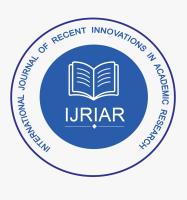Factors Associated with the Ineffectiveness of Epidemiological Surveillance in the Health Districts of the South Cameroon Region
International Journal of Recent Innovations in Academic Research, 8 (3):
10-18 (марта 2024)DOI: https://doi.org/10.5281/zenodo.10799675
Аннотация
In order to better assess the effectiveness of any surveillance system, one of the evaluation criteria remains its ability to capture the desired event. Epidemiological surveillance in the Cameroonian health system in general and more particularly in the health districts of the Southern region faces several challenges which undermine its effectiveness and prevent the achievement of the set objectives. The objective of this mixed cross-sectional study was to analyze the factors associated with the ineffective operationalization of epidemiological surveillance in the health districts of the South Cameroon Region. In order to achieve our objectives, a cross-sectional study was carried out in the ten health districts in the South Cameroon Region during the period from June to August 2019. Data were collected from epidemiological surveillance focal points; those responsible for community participation structures and with one hundred and seventy-six (176) health facilities using the ODK Collect v1.22 application. Semi-structured interviews were also conducted. The data collected from those responsible for epidemiological surveillance of health facilities were analyzed using STATA 13.0 software, while those from the interviews were subject to thematic and content analysis. Bivariate analyzes were based on Chi-squar e and Cramer's V statistics while binomial logistic regression was used for multivariate analysis. The results obtained show that epidemiological surveillance deteriorates depending on the age of the person in charge (Odds Ratio=0.87; 95% CI=0.76-1.003). We note that the effectiveness of epidemiological surveillance decreases as the age of the focal point increases. Beyond the average age (37.95 years), when the age of the focal point increases by an additional year this would multiply by 0.13 time, the risk of inefficiency in the implementation of the epidemiological surveillance process. Health structures having a person responsible for surveillance other than the head of the structure have a greater chance of better operationalizing it compared to those which have a person who combines both responsibilities (Odds Ratio=0.065; 95%; CI=0.004-0.93). The majority of epidemiological surveillance focal points (64%) came from less qualified professional categories (nursing assistants and medical and health technical agents).
